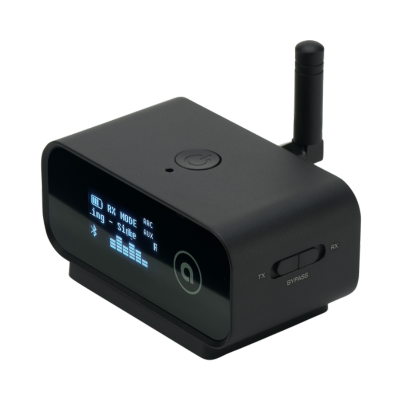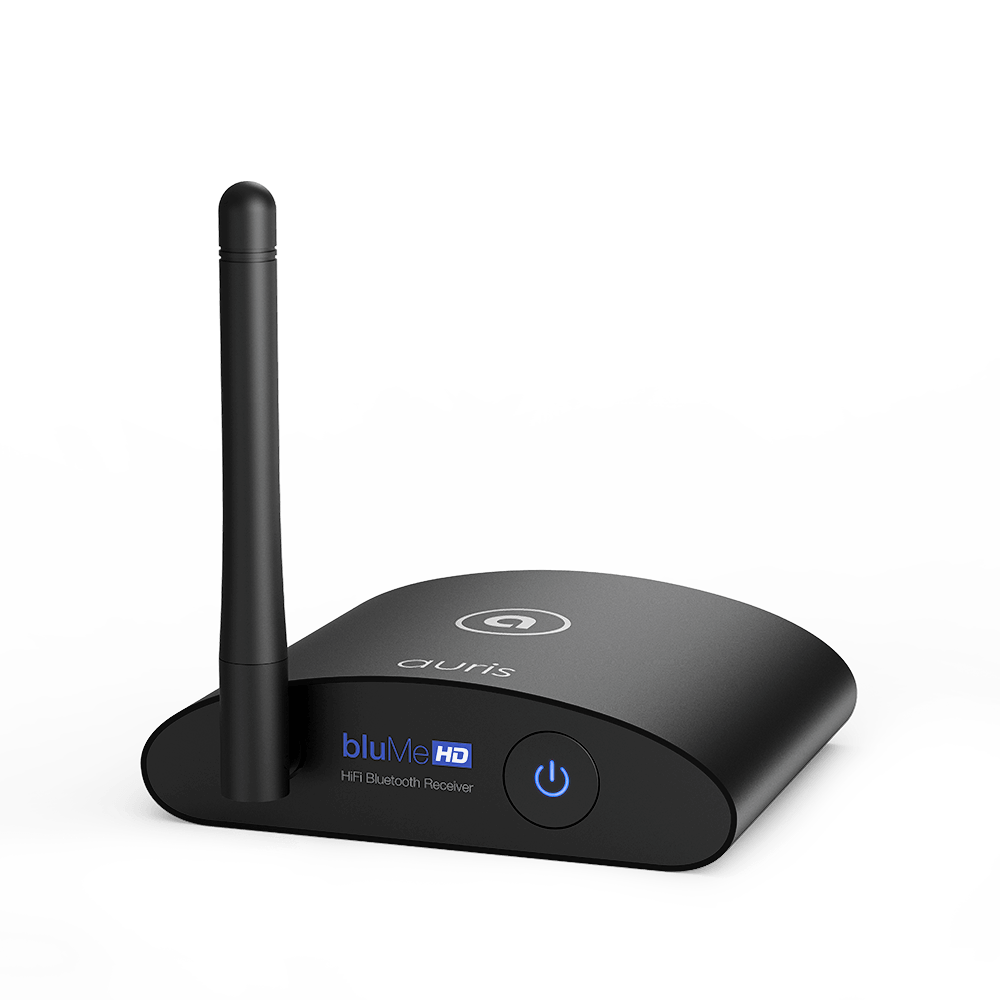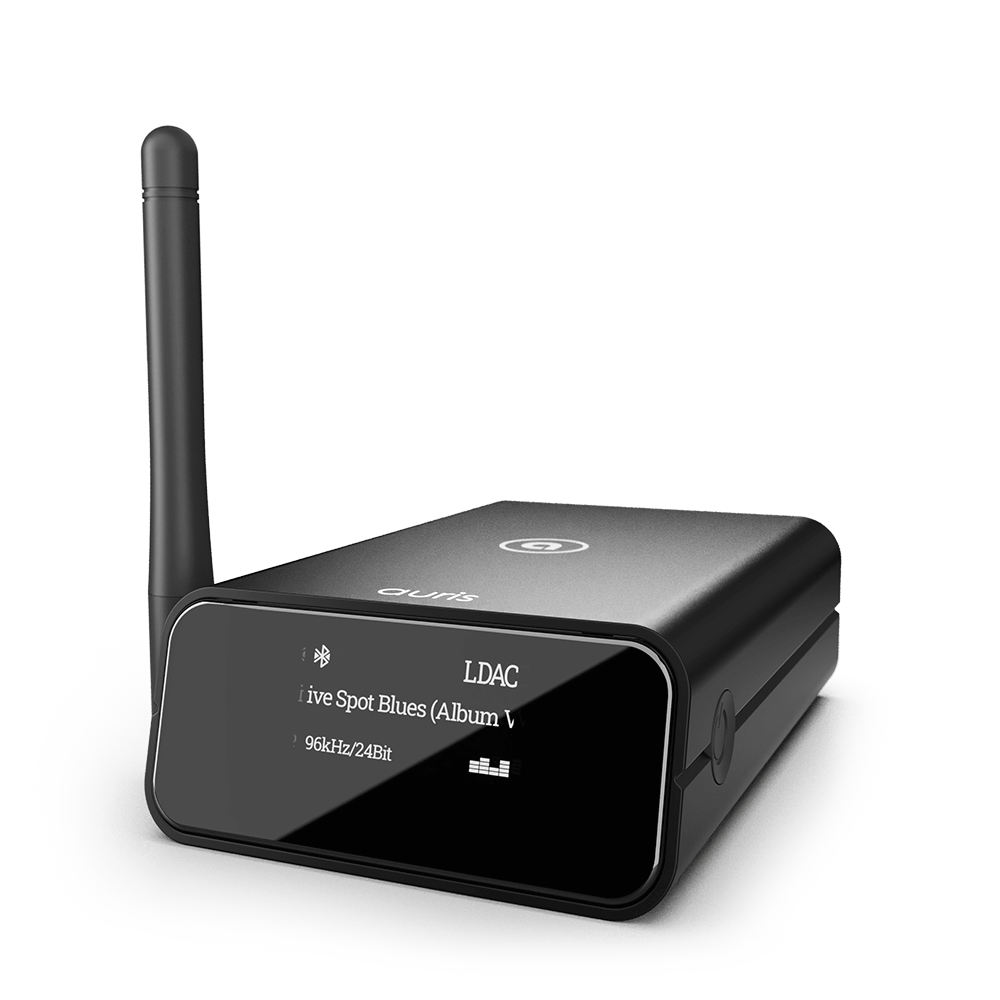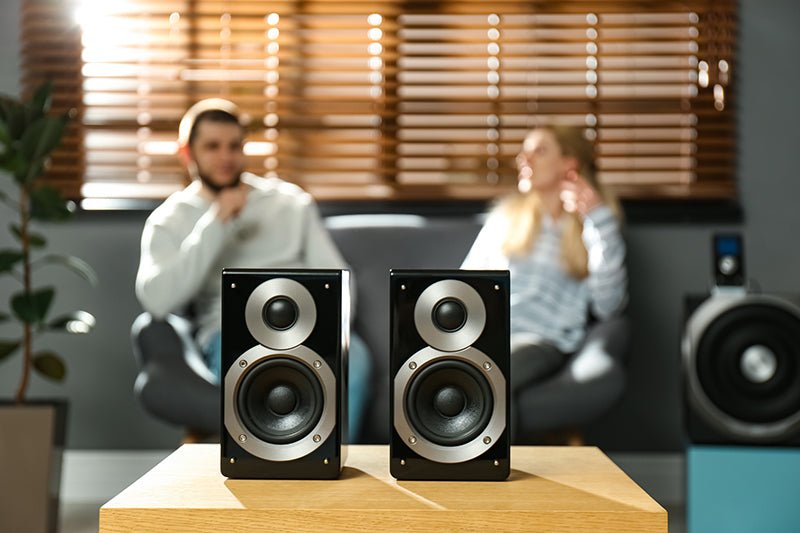
Want to make listening to music easier or better? If you haven’t heard about a Bluetooth receiver for stereos, you’ll want to read on.
Getting started in the world of high-fidelity audio can seem incredibly complicated, especially if you don’t have a lot of experience. For many, using the onboard speakers on the television, the earbuds that come with the phone, or the speakers that ship with the computer is good enough.
However, for many others, the sound quality these provide just isn’t up to snuff. Instead, they seek new technologies to improve their listening experience. For instance, the Bluetooth receiver for stereos is making home stereo systems sound better than ever.
In this article, the Auris team explores the various types of home stereo systems, how to stream audio directly to them using Bluetooth technology, and how to select the best products to make sure your home stereo experience is the best it could possibly be.
Table Of Contents
- What Kind Of Home Stereo Systems Are There?
- What You Need For A Home Stereo
- What To Look For In Home Stereos
- What Is Bluetooth?
- What Are The Benefits Of A Bluetooth Receiver For Stereos?
- Does My Home Stereo Support A Bluetooth Signal?
- Finding The Best Bluetooth Receiver For Stereos
What Kind Of Home Stereo Systems Are There?

There are several different kinds of home stereo systems on the market, but these days, looking to get into any new kind of technology can be complicated for several reasons. For one, trusting the internet to find the best product is often a lost cause.
How can you be sure that you can trust what you read online? You’re more likely to find a product on Amazon with fake reviews that have 4.9 stars and cost $12 than a product that will truly improve your lifestyle. Home stereo systems are no different.
It’s so easy to find yourself wasting money on products that will fall apart right after you set them up or provide no extra value to your listening experience. But this doesn’t have to be the case.
With a little knowledge, your home stereo system can be high quality, easy to use without breaking the bank. But before we get into how to choose the right home stereo system, here’s a short breakdown of the different types of systems available on the market today.
Hi-Fi
Also known as a high-fidelity audio system, Hi-Fi refers to the high-quality reproduction of sound, resulting in some of the best home stereo solutions. With Hi-Fi, there’s minimal distortion or background noise, which means better sound overall.
These systems usually feature surround sound processing and compression technologies like the Dolby ProLogic circuitry or Dolby Digital, maintain 40-100 watts per audio channel, and cost upwards of several thousand dollars, depending on the quality of the sound.
However, in the past few decades, the price-to-performance ratio in this category has steadily gotten better, with systems that would have cost several thousand dollars in the 1990s only being a few hundred dollars now.
Turntable
Reminiscent of the vinyl setups of the last century, turntable home stereos rely heavily on nostalgia to take people back to the audio experience of days gone by.
While these systems are quite rare and expensive, enthusiasts believe they offer the highest level of fidelity and represent the “true experience” of listening to music.
Stereos
Stereo systems are designed specifically for home entertainment, either television, movies, or just music. These systems are usually centered on surround sound and use 5.1 or 7.1 stereo setups designed to make the viewer feel as immersed in the entertainment as possible.
5.1 stereo systems use six speakers, whereas 7.1 systems use eight, the additional two placed behind the listening position to supplement the atmospheric sound.
While home stereo systems might not offer the highest quality or resolution of audio, it’s hard to beat their realism. Suffice it to say, there’s no better way to feel like you’re part of an action movie!
What You Need For A Home Stereo System
If you’re interested in amping up your own at-home entertainment experience, there are a few components you’re going to need. Let’s take a look.
Receiver
A receiver is an amplifier with more functionality. It’s the hub to which the sources and speakers are attached. If you choose a Bluetooth receiver for stereos, the connections occur wirelessly, therefore not adding any additional clutter.
A Matched Pair Of Speakers

You’ll at least need a right and left speaker for sound, although, as we said, many home stereo systems feature six to eight speakers. Multiple speakers allow you to hear the music in three dimensions, making it more like going to a concert or show.
Depending on what you want to do there are lots of options for speakers. You could choose bookshelf speakers, for instance, if your room is small. Alternatively, you could mount speakers on your walls or place them around the seating area on stands.
If your room is large, think about floor-standing speakers, as these do the best job of filling big spaces.
Sources
The sources are what are going to allow you to get access to your music content. These may include turntables, CD players, Blu-ray players, or streaming boxes.
As for the above components of a home stereo system, these will either be sold separately or will be pre-packaged together. Many casual listeners will opt for the pre-packaged solution, but more finicky audiophiles will want to assemble their own systems.
If you choose a pre-packaged setup, you don’t need to worry about matching speakers with amps, but if you do it a la carte, compatibility is key.
If you’re opting for assembling your own system, when matching your speaker to your amp, you’ll have to check that the amount of watts needed by the speaker is within the proper range of your amp. If you over-power your amp, it can result in a damaged speaker.
What To Look For In Home Stereos
When you’re looking to invest in a home stereo, it’s easy to get lost in the sunk cost fallacy. Let’s say you’re looking to find additional speakers that interface with your current setup.
You could potentially find some really good speakers from the same or similar brands, but more likely than not, if your current home stereo system is more than a few years old, you might be better served starting from scratch.
When it comes to shopping for a home stereo, the bottom line is that you need to find something that fits your use case; there is no one-size-fits-all when it comes to audio. If you’re looking to listen to music, a home stereo might not even be the best option.
Consider investing in high-fidelity studio reference headphones with a good preamp to get the best listening experience. However, if you decide that you do want a home stereo system, features are key.
First, think about what you want your stereo to do for you, and then look for something in your price range.
Often, manufacturers load up on marketing buzzwords, adding on features that would be cheaper to just add yourself after the fact. One such example of this is Bluetooth-enabled stereo systems.
What Is Bluetooth?

You probably use Bluetooth many times a day without even realizing it. Do you stream music to your wireless headphones? Or do you airdrop photos to your friends? Even though you use the technology, you may not know exactly what it is.
Bluetooth technology is a short-range data transfer protocol. Devices that have been paired communicate on a 2.4GHz ISM spectrum band (2400 to 2483.5 MHz).
In layman’s terms, Bluetooth allows devices that are close to one another to communicate and share data, usually audio streams or small files.
It’s a wireless technology that makes use of radio frequencies (changed several hundred times per minute) to send that data between two previously paired devices. The most common use of Bluetooth is connecting audio devices to send or receive an audio stream wirelessly.
More people use Bluetooth to allow wireless speakers to play the audio that’s currently on their phones. However, the technology is certainly not limited to smartphone use. Not only that, but it also doesn’t only have to work with wireless speakers. Enter: Bluetooth receivers.
A Bluetooth receiver allows you to connect a non-Bluetooth device to your phone or other Bluetooth-enabled device and stream your content. This means you can get the ease of Bluetooth with your chosen home stereo system, wired or not.
What Are The Benefits Of A Bluetooth Receiver For Stereos?
Even though some believe that wired speakers result in better sound, if you want more flexibility in your setup, a Bluetooth receiver is the way to go. A receiver offers increased portability, as it’s small enough to be put in your bag, and is easy to configure with a non-Bluetooth device.
Once you’re connected, you’re in charge of the playlist even when Wifi is laggy, you have no cell service, or even no internet connection. Need any more reason to get one? Here are some ways you can use your Bluetooth receiver:
- Convert your wired speakers into wireless speakers
- Listen to Spotify or Audible (or whatever your favorite streaming service is) through your car’s stereo
With all of these options, it’s no surprise Bluetooth receivers are the go-to for easier listening.
Does My Home Stereo Support A Bluetooth Signal?
A common implementation of Bluetooth is in a home stereo and higher quality audio. The frequency bandwidth of Bluetooth can support high-fidelity audio. In a few home applications, Bluetooth audio is more practical than a hard-wired audio setup.
However, to get Bluetooth as a feature on a home stereo, you’re probably going to have to pay a premium.
To get customers to pay a higher price, manufacturers usually put these kinds of technologies on higher-priced models, keeping feature sets behind paywalls as barriers to entry. As unfortunate as this is, there’s actually a solution.
As we said, the Bluetooth receiver for stereos is an excellent device that can be used to transform almost any existing stereo system into a Bluetooth-connected device. This includes speakers, docking stations, Hi-Fi, and headphones.
By using a Bluetooth receiver, you will be able to stream audio directly from a smart TV, your smartphone, tablet, laptop, or any other Bluetooth device directly to your existing stereo.
Finding The Best Bluetooth Receiver For Stereos
As with any new technology, it can be hard to feel like you’re making the best decision when looking for something.
For example, if you wanted to find “the best smart speaker,” you might find yourself just searching for that term online, where you’re more than likely to see bad products with fake reviews, making it difficult to feel like you’ve made the right decision.

Here at Auris, we care about helping you make the very best decision when it comes to your stereo setup. We know there are certain things that really matter for the best listening experience: audio quality, range, and of course, easy set up.
Our bluMe HD and bluMe Pro Bluetooth receivers deliver on all points.
Audio Quality
We created the bluMe HD and bluMe Pro with as many features as possible to ensure that the user experience is excellent.
Our premium HiFi Bluetooth receivers bring lossless audio streaming to any existing vintage HiFi stereo system, A/V stereo receivers, or powered speakers.

Both receivers use Bluetooth 5.0, but bluMe HD uses it with aptX HD, aptX LL, aptX, and AAC. BluMe Pro, on the other hand, utilizes high-resolution Bluetooth audio codecs — LDAC, Qualcomm, aptX HD, and AAC, providing even clearer, distortion-free digital sound.
Both receivers use audiophile-grade digital-to-analog converters (DAC) — bluMe HD uses TI PCM5102A, while bluMe Pro uses ESS Sabre ES9028Q2M that upsamples to 32-bit/384kHz encoding, basically kicking it up a notch.
Range
The bluMe Pro and bluMe HD feature a high gain antenna for long-range streaming up to 30 meters (100 feet).
Easy Set Up
Using bluMe HD and bluMe Pro couldn’t be easier. There are no apps and no wireless routers to figure out. All you have to do is plug, pair, and play, and within seconds you’re jamming to your tunes.
What’s more, these feature both analog and digital inputs so they can be used with old and new TVs and audio equipment alike.
If you’re looking for a solution where you can get better sound and overall experience from your technology, the bluMe HD and Pro fit the bill.
The Bottom Line

The answer to whether you need a Bluetooth receiver for your stereo is yes. If your current home stereo system doesn’t feature Bluetooth and you’re looking to up your audio game without breaking the bank, a Bluetooth receiver for stereos checks all the boxes.
It provides you with a wide range of compatibility with both analog and digital inputs and outputs, transforming your everyday listening experience into something even better than it ever was.
To top it all off, the bluMe HD and bluMe Pro from Auris are designed to integrate perfectly with audio systems of all types. Whether you’re wired or wireless, you are free to cue the music!





